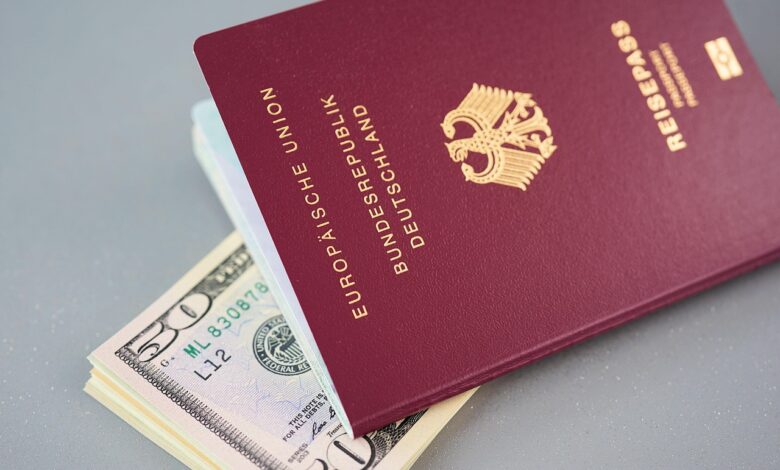Italian Dual Citizenship: Rules and Benefits

Italy offers one of the most generous dual citizenship programs in the world, allowing individuals to hold Italian citizenship alongside their original nationality. This opportunity is particularly appealing due to Italy’s rich cultural heritage, high quality of life, access to the European Union (EU), and numerous other benefits. However, acquiring Italian dual citizenship requires meeting specific eligibility criteria and navigating a detailed application process. In this guide, we’ll explore the rules, benefits, and steps involved in obtaining Italian dual citizenship.
1. Who Qualifies for Italian Dual Citizenship?
Italian law allows individuals to claim citizenship through several pathways, including jure sanguinis (by descent), marriage, residency, or adoption. Below are the main categories:
A. Citizenship by Descent (Jure Sanguinis)
This is the most common route for claiming Italian dual citizenship. Under Italian law, citizenship is passed down through generations without limitation, provided certain conditions are met:
- Eligibility Criteria :
- Your Italian ancestor must have been an Italian citizen at the time of your birth or the birth of your direct ancestor(s).
- The line of descent must be unbroken, meaning no ancestor renounced their Italian citizenship before the birth of the next generation.
- If your ancestor naturalized as a citizen of another country before July 1, 1912, you may not qualify unless they were living in Italy after that date.
- Documentation Required :
- Birth, marriage, and death certificates for yourself and all ancestors in the lineage.
- Naturalization records (if applicable) proving your ancestor did not renounce Italian citizenship.
- Apostilles and translations of documents into Italian.
B. Citizenship by Marriage
If you’re married to an Italian citizen, you can apply for citizenship after three years of legal residence in Italy (or four years if living abroad). The marriage must be legally recognized in Italy.
C. Citizenship by Residency
Non-EU citizens who have legally resided in Italy for at least 10 years may apply for citizenship. EU citizens need only five years of residency. Applicants must demonstrate integration into Italian society, including knowledge of the Italian language (at least B1 level).
D. Citizenship by Adoption
Children adopted by Italian citizens under the age of 18 automatically acquire Italian citizenship. Adults adopted by Italians may also apply under certain conditions.
2. Benefits of Italian Dual Citizenship
Holding Italian citizenship comes with a wide range of advantages, both within Italy and across the EU. Here are some key benefits:
A. Freedom of Movement in the EU
As an Italian citizen, you gain access to the Schengen Area and the broader European Union. This allows you to live, work, study, and travel freely in 27 EU member states without needing visas or permits.
B. Access to Healthcare and Social Services
Italy has a publicly funded healthcare system that provides free or low-cost medical services to citizens. As a dual citizen, you’ll enjoy the same rights as native Italians, including access to hospitals, doctors, and prescription medications.
C. Educational Opportunities
Italian citizens pay significantly lower tuition fees at public universities in Italy and other EU countries. Additionally, scholarships and grants are often available exclusively to EU citizens.
D. Political Participation
Dual citizens can vote in Italian elections, including local, regional, and national ballots. You may also run for office in certain capacities.
E. Property Ownership
While non-EU citizens face restrictions on purchasing property in certain parts of Italy, Italian citizens have unrestricted rights to buy real estate anywhere in the country.
F. Cultural Connection
For many applicants, obtaining Italian citizenship is a way to reconnect with their heritage and preserve family ties to Italy. It’s an opportunity to embrace Italian traditions, language, and culture.
G. Tax Advantages
While Italy does impose taxes on worldwide income, there are favorable tax regimes for new residents, such as the “Impatriati Regime,” which offers reduced taxation for up to 15 years.
3. Steps to Apply for Italian Dual Citizenship
The application process varies depending on the pathway you choose. Below is an overview of the general steps:
A. Gather Required Documents
- Obtain certified copies of birth, marriage, and death certificates for yourself and all relevant ancestors.
- Translate all documents into Italian by a certified translator.
- Legalize foreign documents with an apostille (under the Hague Convention) or equivalent certification.
B. Submit Your Application
- Through an Italian Consulate : If applying from abroad, contact the Italian consulate responsible for your jurisdiction. Processing times can vary significantly (often 1–3 years).
- In Italy : Alternatively, you can relocate to Italy and apply directly through the municipality (comune) where you reside. This method may expedite the process but requires establishing legal residency.
C. Attend an Appointment
Consulates typically require an in-person appointment to verify your documents and conduct an interview. Be prepared to answer questions about your ancestry and provide additional evidence if needed.
D. Wait for Approval
Once submitted, your application will be reviewed by Italian authorities. If approved, you’ll receive a certificate of citizenship and can apply for an Italian passport.
4. Common Challenges and Tips
While the process is straightforward in theory, it can be complex in practice. Here are some common challenges and tips to overcome them:
A. Document Preparation
- Many applicants struggle to locate old records, especially if ancestors emigrated long ago. Start early and reach out to archives, churches, and government offices for assistance.
- Ensure all documents are properly translated and legalized. Errors can lead to delays or rejections.
B. Long Processing Times
- Italian consulates often have backlogs due to high demand. To avoid frustration, plan ahead and consider hiring a professional service to manage your application.
C. Language Barrier
- While English is widely spoken, most official communications will be in Italian. Familiarize yourself with basic Italian phrases or enlist the help of a translator.
D. Renunciation Issues
- If an ancestor renounced their Italian citizenship before passing it down, you may lose eligibility. Consult with an expert to determine whether exceptions apply.
5. Frequently Asked Questions (FAQs)
Q: Can I keep my original citizenship?
Yes, Italy allows dual or multiple citizenships. You do not need to renounce your current nationality to become an Italian citizen.
Q: How long does the process take?
Processing times vary widely. Applications through consulates can take 1–3 years, while applications in Italy may take 6 months to 2 years.
Q: Do I need to speak Italian?
While fluency isn’t required for jure sanguinis applications, knowing basic Italian can be helpful during interviews and correspondence. For residency-based applications, you’ll need to pass a B1-level language test.
Q: What happens if my application is denied?
You can appeal the decision or reapply with corrected documentation. Consulting a lawyer specializing in Italian citizenship may improve your chances.



